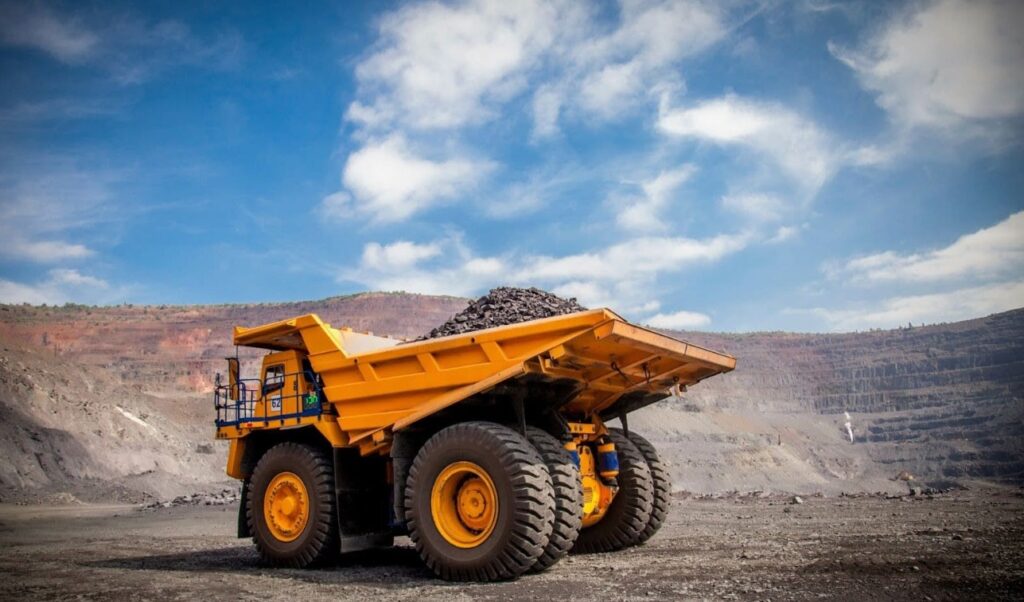Projects that involve moving large volumes of materials rely on the dependability, high payload capacity and versatility of dedicated dump trucks. These vehicles are critical in dozens of industries when moving bulk materials, such as sand, soil, ore, fertiliser, gravel, demolition and recycling waste. Today’s trucks have evolved to include advanced hydraulic systems for efficient and fast loading and unloading, computerised controls and enhanced safety features.
What Are Dump Trucks?
A dump truck or tipper is a heavy-duty vehicle with one simple task: transporting and unloading bulk materials. Besides engines, chassis and cabs, dump trucks are recognisable by the dump body bed, often made of steel or aluminium, and lifted and lowered by an elaborate hydraulic lifting system. This includes cylinders, pumps, reservoirs and pressurised hydraulic fluid to generate the forced need to lift the bed.
The truck bed is hinged at the rear, allowing it to raise upwards, and in some dump truck types, sideways. To ensure precision and safety, control systems inside the cabin aid the unloading process and dumping of materials where needed.
Common Types
- Standard dumpers/tippers are the most common type, often featuring one or two rear axles on a rigid chassis, a hydraulic rear bed, and a single front axle. Heavy-duty versions, with up to four rear axles, have payloads of up to 32 tons. They are staples in construction, mining, landscaping and roadworks.
- Articulated tippers – these consist of a truck/tractor and one or more dump body trailers, connected by a hinge. Variations include ‘truck and dog trailers’ (with axles at either end of the trailer) and ‘truck and pig trailers’, with centred or fixed to the front or middle third of the trailer, and connected to the truck via a gooseneck coupling. Payloads vary from 20 to 40 tons. The setups are very common in Australia, and allow use over rough, unsurfaced roads, usually in mining and off-road construction sites.
- Side tippers – have a bed that tilts to the side. Ideal for unloading the contents of the dump bed in confined spaces, such as road maintenance.
- Off-road dumpers – designed specifically for rough terrain and off-road conditions. Fitted with huge tyres, enormous dump beds, payload capacities reaching 400 tons, and powered by 4000 hp diesel engines, these are some of the biggest and most powerful trucks, period. A common feature in large-scale mining operations.
- Semi-trailer/super dump trucks – these have a single prime mover, with one or more semi-trailers. Payload capacities average 30 tons in single semis, to 175 tons in the longest road trains.
- Mini tippers – light-duty versions of bigger trucks, with tipping capacities of 2 tons and overall gross vehicle weight (GVM) not exceeding 4.5 tons. Commonly seen in council work and small-scale residential uses.
Industries and Uses
Tippers and dumpers are versatile vehicles. Their design simplifies the efficient transport of various materials in dozens of industries:
Construction
Tippers are common features at construction sites, where they facilitate the transport of bulk materials like sand, gravel and stone. They’re also widespread in demolition tasks, where they’re engaged in expedient site clearing and prep work for new developments.
Agriculture and Farming
With high payloads, tippers and dumpers are proven ways to deliver tons of fertiliser, mulch, soil and animal feed. Their robust build and ability to handle different types of terrain make them especially useful in rural Australia. Common uses also include maintaining farm roads and drainage systems.
Waste Management and Recycling
Trucks are widely used in collecting refuse materials and delivering them to dump sites and recycling centres. Tippers transport large quantities of compost, refuse, plastics, white waste and other loads.
Mining and Quarrying
Both industries heavily rely on large-payload off-road dumpers to get minerals, ore and stone to their destination. The trucks ensure a continuous supply of materials for processing in local foundries or loading onto ore trains and bulk ships.
Road Maintenance
Tippers and dumpers are regular sites in roadworks, where they’re used to supply ashplant, sand, concrete and other building materials.
Key Benefits
- High payloads – with payloads varying between 2 and 400 tons, dumpers offer flexibility and adjustability for transporting materials in varied settings. Payloads can be further increased with the addition of tailgates. The high payload capacity ensures trucks can carry substantial loads with fewer trips, thus cutting transportation costs and fuel use.
- Efficiency – dump beds can be raised or tilted to ensure quick and safe unloading. This minimises the need for manual labour, improves worksite safety and boosts productivity and efficiency.
- Adaptability – the ability to carry anything from white waste or iron ore to animal feed means the trucks can be tailored to any type of load. Moreover, capable engines and drivetrains allow the trucks to navigate challenging terrain, including mines, quarries and new construction sites.
- Advanced safety features – all-new tippers and dumpers benefit from additions like integrated cameras, blind spot monitoring and collision avoidance among other safety systems to ensure driver and worksite safety. Load sensors monitor weight distribution when approaching maximum payloads, while options like GPS tracking and geofencing enable precise route planning that save time and reduce operational costs.
- Durability – sturdy chassis, adjustable suspension, and dump beds made of thick-gauge, high-grade steel for abrasive materials and aluminium for non-abrasive loads ensure the required durability with different loads.
Factors When Choosing the Right Dump Truck
New or Used?
New trucks come with defined warranties, have the latest tech and safety features, and can be optioned with essentials for the job. With that said, they can be financially out of reach for many businesses, and depreciate once they leave the dealership. Moreover, limited availability and long wait lists negatively impact projects with set deadlines.
Going used saves money with much lower initial purchase costs and depreciation already factored into the price. Most dump trucks have service lives averaging between 10 and 15 years, meaning used trucks with low work hours, detailed service history and good condition can be just as efficient as new vehicles. What’s more, they’re readily available, with considerably more stock to choose from.
Payload Capacity
Determine the type and quantity of materials you’ll be transporting. Payloads will differ in different projects, but undersizing the dump bed and a max payload capacity limits productivity and increases operational costs. Alternatively, sizing trucks above current payload needs means a higher purchase price and higher fuel use with bigger, thirstier engines.
Dump Body Type, Materials and Condition
Choose between rectangular dump beds for more stability when transporting uneven or bulky materials, curved, half-round beds for rocks and rough debris (while also observing legal weight limits), or a bathtub body, essentially a hybrid between rectangular and curved dump beds to balance overall hauling space and bed durability.
Also, consider how materials last with the payload. Steel beds are more durable and suitable for rock, stone, asphalt and demolition debris, but add weight. Aluminium is a good choice for sand, dirt and lighter, abrasive loads. If buying used, check the condition of the dump bed and bed liner for cracks, dents and visible damage.
Type and Axle Configuration
The type of truck you buy also depends on where it will be used. Axle configurations and trailers can limit manoeuvrability in urban settings but are a requirement with larger payloads, specifically in rural and off-road settings.
Engine, Hydraulics and Other Considerations
Choose efficient engines with a good balance between power and fuel consumption. A good idea is to have a qualified mechanic inspect the truck and engine before buying. Also, check the hydraulic system for leaks by lifting and lowering the cylinders and the condition of pumps, tanks and other parts. Lastly, inspect the cabin, controls, gauges, tyres and the general condition of the truck before parting with your cash.



